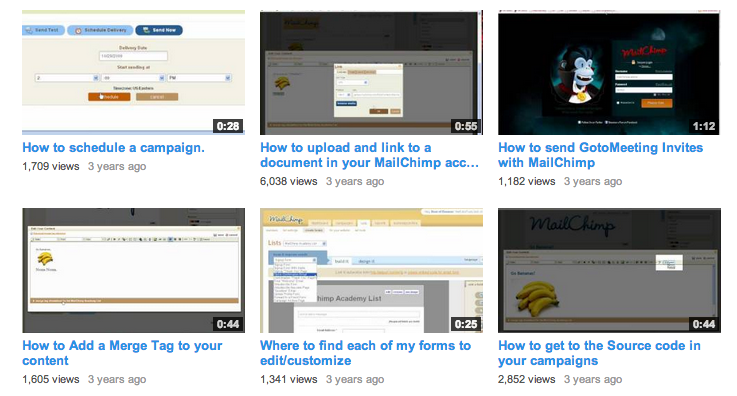One of the biggest challenges that have faced marketers for the last few years is the idea of measuring digital results.
What are the goals of your content marketing campaign?
What are the goals of writing more blog posts?
What are the goals of this effort as a whole?
Marketers around the globe have thrown up the white flag claiming that you cannot measure the ROI of social media & content, but I’m here to call those marketers bluff.
In the last few years, I’ve worked with brands that range from Fortune 500 companies to startups that are just getting started. In each of these situations, I’ve identified and addressed this question and identified the importance of goals. From there, I’ve monitored, tracked, and analyzed these results to ensure that they actually had something to call ROI (Return On Investment).
In this post, you’ll find examples of goals that you can use to measure the results and ROI of content marketing. These are goals that marketers all over the globe have used as their benchmarks. It’s these goals that will help guide your decision making, and ultimately drive your chances of achieving meaningful and measurable results:
Example 1: Generate New Business Leads
If no one is interested in your offering, you’re quickly going to find yourself out of business. That’s stating the obvious, but it’s a part of the business equation that too many businesses are forgetting.
Content marketing gives brands an opportunity to generate business leads by sharing and communicating their value. It’s a balancing act between providing value to an audience and offering insight as it relates to why they should buy from you. It’s this balancing act that the best marketers have accomplished with grace, while others have attempted and fallen flat on their face.
As an example, the folks at KissMetrics have done a great job in using their content to generate business leads. The KissMetrics blog is filled with insights and information that is specifically of interest to marketers, their target audience. The content itself ranges from stories sharing the biography of Elon Musk to Infographics highlighting the impact of colors in online sales.
What really differentiates the KissMetrics blog and other B2B or Enterprise blogs is two-fold. First, they focus on quality over quantity. Second, their website is plentiful with call to actions driving users to submit their emails for trials, newsletters and more.
READ MORE: How The Best Brands Use Marketing To Capture Emails For Your Business
Example 2: Establish Thought Leadership

Thought Leadership.
Thought leadership is the idea of communicating new concepts in a compelling way that is easily understood and shared. Thought leadership is hard. It’s not something that anyone can do, but when it’s implemented, you can only look on in amazement. Thought leadership is when you bring a completely new spin on a topic and provide information or thoughts that people haven’t thought of before.
What’s one of the best ways to achieve a level of thought leadership?
Two-fold:
- Do things worth writing about
- Write about the things you’re doing
It could be research.
It could be new projects.
It could be case studies.
Businesses and startups that work in data driven industries have a huge advantage for reaching thought leadership but I’m a believer that any brand can do it. Create your own data if you don’t have it currently and use it to unlock and share insights and content that wont be found anywhere else.
A great example of a brand creating their own data is when MindSea put together this great report highlighting What 300 Of The Top iPhone Apps Can Teach Us About App Icon Design.
One of the most effective brands that implemented a thought leadership strategy with their content is OkCupid and their Dating Research Blog. OkTrends is a blog that is filled with original research and insights from the dating site OkCupid. The marketing and data team at OkCupid compiled various observations and statistics from hundreds of millions of their user interactions. As a result, they created content that went on to be discussed in various media outlets and drive thousands of backlinks.
Example 3: Community Development
When you create content that establishes a sense of community, you’re less likely to spend time tooting your own horn. Content that drives community is value focused and is centered around educating, engaging, or entertaining your target audience. It’s rarely self-promotional and aims to establish a true connection with your readers.
A great example of a company who has used their blog to establish a community is the folks at BufferApp. The BufferApp blog is filled with valuable content that isn’t solely focused on their product or social media in general. Instead, the BufferApp blog is focused on productivity and strategies & tips on life hacking.
When Kate Stull of Popforms writes about building a company without product, one of the key messages is around content and audience building. She raises the point that a company that focuses on building an audience first and building a product second will find that a captive audience is more willing to work with you on products that don’t quite hit the mark. In other words, creating content can establish a sense of community that drives loyalty and trust.
Example 4: Improve Customer Service
The types of content we’ve talked about thus far are primarily focused around dynamic content that lives on a blog. Contrary to some content marketers beliefs, the blog isn’t the beginning and end of a content marketing plan. In fact, your content strategy also requires looking deeper at other aspects of your business.
When a customer has a problem with your product, what do you think they do?
Do they call your support team? Email you directly?
In most cases, the first instinct for your customers is going to be doing a search on Google. Search engines are considered the highway to answers for most people. Thus, you need to ensure that Google drives people to relevant answers to their questions.
Tactics to provide customer service through content include a FAQ page, Support pages, and Tutorial Videos. A FAQ page is one of the more traditional approaches to customer service, and is a tried and tested method.
Support pages are also great for search, but often times require management in the form of a moderator. Lastly we have videos, my favourite of the batch, depending on your industry of course. Video provides vocal and visual support, which makes it easier than ever to follow along and replicate the efforts.
Example 5: Sales
Did you really think I would leave this off the table?
Sales are important.
Sales are influenced by marketing.
Those two statements are things that often get many marketers a bit nervous but I’m not here for it. Marketers need to recognize that sales is a part of the job the same way that change is a part of the job. It’s a marketer’s job to help make a sales teams job easier if they’re in B2B marketing. If a marketer is working in the ecommerce side of things, it should be an even more linear metric between their efforts and sales.
Don’t avoid the sales cycle when planning your marketing efforts. Make it a goal. Make it a focus.
Make it known that you play a role in keeping the lights on.
Wrapping This Up…
You should now be able to come up with meaningful goals for your content marketing efforts. The goals I highlighted above are only some of the benefits of content marketing. Each business is different and each content strategy should adapt based on your goals and target audience.
So tell me, what other goals have you used in your content marketing efforts?



